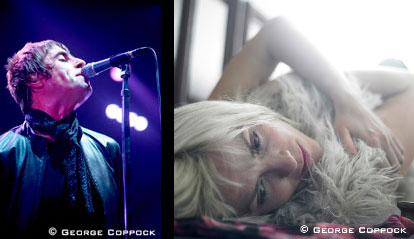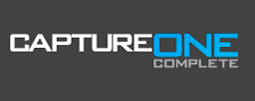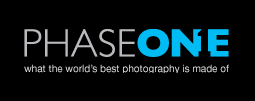
Capture One is the software that has given photographers the world over the tools needed to exploit the full potential of processing their digital images from a RAW file. For those that are new to digital photography most cameras use a Jpeg format which comes with its own white balance sharping and compression depending on the camera settings. Where as a RAW file is like a negative in old film terms, its needs to be developed to be usable.
The Danish company Phase One created the software to run alongside their powerful digital backs. In recent versions of the software you've been able to use it to process you DSLR files starting with the Canon 1DS and now pretty much all brands of digital cameras that shoot RAW. On certain brands of DSLR's you can even shoot tethered. The RAW converter and workflow of capture one pro makes editing your images easy and efficient.

Wether importing files or shooting tethered the control you have over your images is unprecedented. The slick interface is not only easy to navigate round but each tool and preset is customizable making your tool bar your own.
The library tool lets you create/open sessions to edit your captures and unlike previous versions you can make albums have favorite folders browse through systems/hardrives and even run more than one capture session at once!! So you can be batch processing images in one sessions and capturing/editing images in another.
The capture tool allows you to control the settings ISO,Shutter Speed and Aperture of your camera from your computer it also lets you name your captures.
The color tool has tons of options from custom applied white balances to custom skin tones all of which can be easily applied or copied to other images in the session or you can set the first image in the session to have all custom settings and this will be inherited by every future capture. (This feature also works with all the tools).
Another great feature of Capture One 5 is that you can have variants of an image. So if you have a capture you can make copies of it wether its a different white balance or sepia tone or completely monochrome it all stems for the original capture yet they can be processed as individual images.

You also have control over exposure, levels and curves, the great advantage to this is that you don't lose any quality as all adjustments are made RAW so when you process the file to Jpeg or Tiff all adjustments are done keeping the file to its highest possible quality. Another good feature to the Exposure tool is the High Dynamic Range which allows you to adjust the shadow and highlights of a image this does have limits before losing quality but then so does all HDR.
Some of the other main tools are Lens Correction where you can depending on the lenses you have control distortion light fall off and even sharpness fall off. Also in this tab is a Vignetting tool allowing you to apply vignettes to your images ranging from light to dark.
The crop tool comes with 6 default crops that are pretty standard sizes but you can add/remove as many aspect ratios as you wish, but the greatest thing within the crop tool is overlay. Overlay is perfect for people shooting to layouts as you can import your clients layouts and set your crop accordingly so you'll always know that what you're shooting will fit .

Within the focus tool you can add sharpening reduce noise reduction and fix problems with Moire and now you can also do spot/dust removal which is similar to the famous clone tool.
When it comes to output or processing images you options are again huge. You can have as many different recipes as wish so for example i use 3 recipes
- Which is a low res 72 dpi jpeg perfect for emails and web.
- A High Res 300 dpi Jpeg.
- A High Res 300 dpi Tiff.
You can use 1 recipe at a time or all 3 at once they're all put into separate folders with in the output folder of that session. You can choose to open the images within a number of other post editing programs.
You can add custom watermarks wether image or text based or even process a web ready contact sheet straight to the internet.
Also a great tool within the output tab is Scale i use this to boost up cropped files for example if a library requests a minium of 45mb file but i've crop in on a shot i change the scale percentage and this ups the output file size to meet the requested file size, as this is done during a RAW state it has no effect on output quality.
There is a batch output which allows you to keep track of what's been processed and what is processing this also gives you an idea of how long it will take and how much space is left on your hardrive.
There are so many features within this program its hard to talk about them all and i've only go into detail on a few of the tools that i use everyday. The best thing about Capture One is you can edit and apply settings to all or a few of your captures its a workflow as well as a processing tool. Capture One has taylored its software to meet a photographers needs not only this but they've taken on board that every photographer works in a different way/workspace with this is mind they've made it possible for you to completely custom this program so its unique to the individual.
The final product is unbeatable! If a photographer hasn't already got this software, he needs it!!











